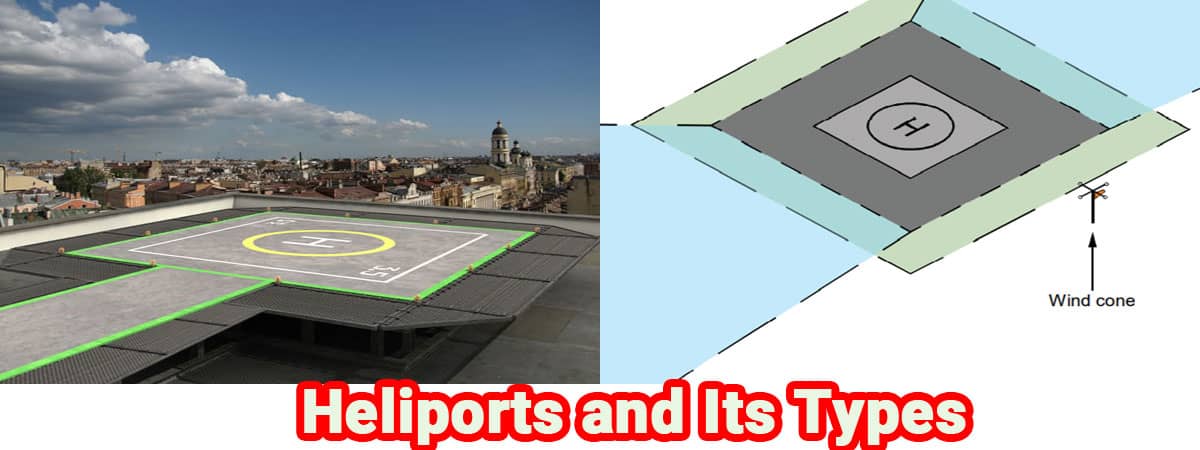Heliports and Its Types

The pads may be made from steel, concrete, or aluminum. In places like hospitals, golf courses, skyscrapers, and private buildings, helicopter landing pads are commonly found. The ground or an elevation can be used to build heliports. A rooftop or elevated structure can be used for an elevated heliport.
Features of Heliports
- Heliports can be split into four basic divisions: Final Approach and Takeoff Areas, Touchdown and Liftoff Areas, safety areas, and wind cones.
- Final Approach and Takeoff Areas are areas over which a pilot completes the final phase of an approach to land or from which he departs. The Touchdown and Liftoff Area is a load-bearing, paved area usually located within Final Approach and Takeoff Areas, where helicopters perform touchdowns and takeoffs.
- A helicopter's type and rotor diameter determine the size of the Touchdown and Liftoff Areas. Square, rectangular, and circular Touchdown and Liftoff Areas are all possible.
- Heliports will all have a Touchdown and Liftoff Area. Touchdown and Liftoff areas can be located within or outside Final Approach and Takeoff Areas.
- Heliports on the ground are typically made of cement concrete with a minimum thickness of six inches.
- Heliports are categorized based on their purpose. Hospitals, for instance, have an H painted in red with a cross outlined in the background. White is painted on all other heliports.
- The maximum weight that can be handled by each heliport can be seen on it. Additionally, it must specify the maximum dimensions of helicopters permitted to land.
- Heliports should have a minimum size of 40 x 40 feet. In addition, there should be no obstacles around heliports, and those areas should be at least twice as large as the heliport itself.
- Pilots are provided with wind speed and direction data by wind cones located near the heliport. There are wind cones positioned on the helicopter approach path 150 meters from the Touchdown and Liftoff Areas so the pilot can see them.
- The surfaces of heliports are nonslip. For visibility from the air, heliports are typically marked with an 'H' or a circle in concrete.
Types of Heliports
General Aviation Heliports
Private helicopters, corporate helicopters, and helicopter air taxi services use general aviation helicopters at general aviation airports. The majority of the general aviation heliports are privately owned.
Transport Heliports
Heliports for the transport of large helicopters are located at airports that operate for airlines.
Terminal Heliports
Most airports allow helicopters to perform separate services without interfering with airplane traffic. In the airports, helicopter boarding is accommodated in separate terminals and gates with interconnected passenger traffic.
Helipad users must ensure that the airport has convenient facilities and services at the terminal if they are to go to an airport by helicopter. Airport Terminal also provides exclusive helicopter facilities, safety areas, helicopter taxi routes, and taxiways in addition to helipads with helicopter facilities.
Hospital Heliports
Helicopters that provide emergency medical care use hospital heliports. Heliports at hospitals can also accommodate large military helicopters during emergencies.
Helipad Matting
Helipad matting is a portable material that is used to create a temporary helipad on a surface. It is designed to provide helicopter pilots with a visual guide to land their vehicles in a safe manner. This is accomplished by preventing a phenomenon known as brownout, which occurs when sand or dust is blown up into the air by the powerful downward force of a helicopter. Brownouts cause spatial disorientation, confusion, and panic because they cause spatial disorientation, confusion, and panic.
Video Tutorials
